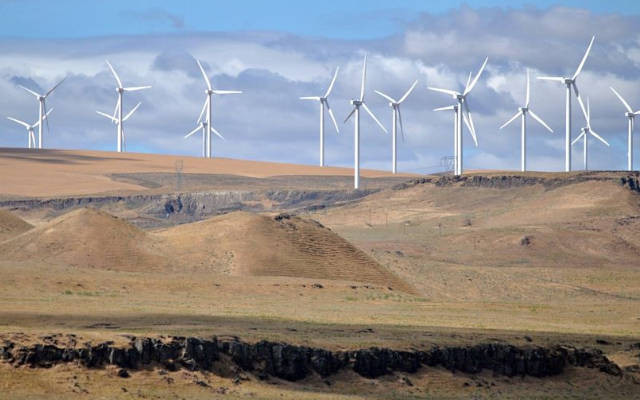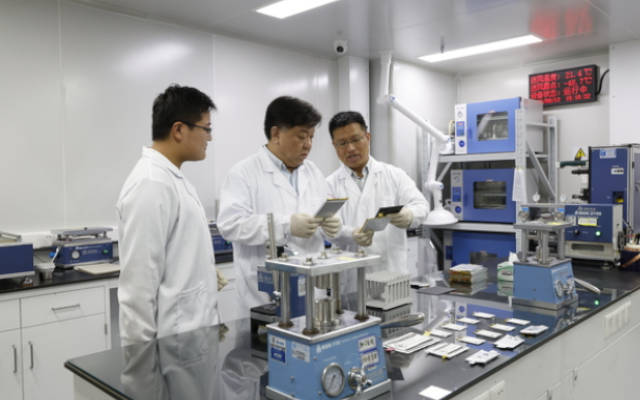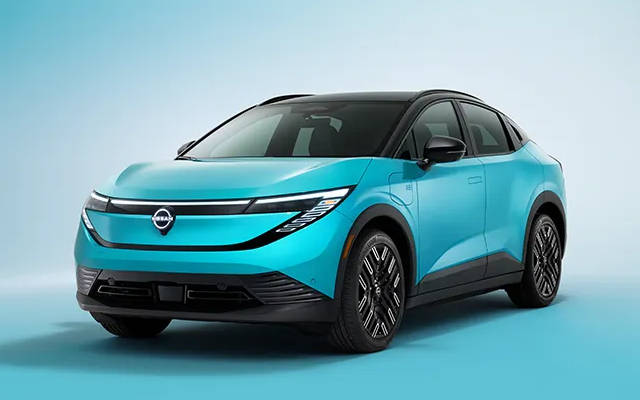 EDITOR'S PICK
EDITOR'S PICK
Africa: The Green Transition's Surprising New Home
21 Aug 2025 | Synopsis
 Africa emerges as unexpected renewable energy leader, "leapfrogging" fossil fuels with 60% of world's best solar resources. Kenya targets 100% renewables by 2030, Ethiopia builds largest hydro project. Chinese clean tech exports up 153%. By 2030, renewables will account for 80%+ of new capacity. Economic necessity drives energy independence through domestic clean sources.
Africa emerges as unexpected renewable energy leader, "leapfrogging" fossil fuels with 60% of world's best solar resources. Kenya targets 100% renewables by 2030, Ethiopia builds largest hydro project. Chinese clean tech exports up 153%. By 2030, renewables will account for 80%+ of new capacity. Economic necessity drives energy independence through domestic clean sources.Cybertruck Insurance Dilemma: Tesla's Challenge Ahead
21 Aug 2025 | Synopsis
 Tesla's Cybertruck faces an insurance crisis as major providers like GEICO and Hanover rescind coverage due to high repair costs, limited production data, and underwriting challenges. Owners report cancellations and steep premiums, while Tesla's own insurance offers partial relief in select states. The issue threatens future sales and highlights the gap between bold design and real-world support, leaving buyers uncertain and Tesla under pressure to respond.
Tesla's Cybertruck faces an insurance crisis as major providers like GEICO and Hanover rescind coverage due to high repair costs, limited production data, and underwriting challenges. Owners report cancellations and steep premiums, while Tesla's own insurance offers partial relief in select states. The issue threatens future sales and highlights the gap between bold design and real-world support, leaving buyers uncertain and Tesla under pressure to respond.The Lithium Wars: EnergyX, Tesla, and the Race to Reinvent Battery Supply
20 Aug 2025 | Synopsis
 EnergyX and Tesla are racing to reshape lithium supply chains. Energyx's modular LiTAS™'s system extracts lithium from brine with high efficiency, while Tesla builds a $1B acid-free refinery in Texas. Smackover, AR is EnergyX's likely launch site, offering infrastructure and proximity to EV markets. Meanwhile, sodium-ion batteries emerge as a low-cost alternative, potentially disrupting lithium demand but not replacing it. The future of batteries is diversified, fast, and fiercely competitive.
EnergyX and Tesla are racing to reshape lithium supply chains. Energyx's modular LiTAS™'s system extracts lithium from brine with high efficiency, while Tesla builds a $1B acid-free refinery in Texas. Smackover, AR is EnergyX's likely launch site, offering infrastructure and proximity to EV markets. Meanwhile, sodium-ion batteries emerge as a low-cost alternative, potentially disrupting lithium demand but not replacing it. The future of batteries is diversified, fast, and fiercely competitive.China's 600 Wh/kg Lithium-Metal Battery Breakthrough: Hype or Real Progress?
19 Aug 2025 | Synopsis
 Chinese researchers report lithium-metal pouch cells reaching 600 Wh/kg - nearly double today's EV batteries. Published in Nature, the work uses a novel electrolyte and shows promising density but only ~100 cycles, far short of EV needs. Scaling, safety, and cost remain unproven. While credible science, it's early-stage. Current leaders like CATL, BYD, Amprius, and SES offer lower but durable densities; no one is yet close to 600 Wh/kg for real EVs.
Chinese researchers report lithium-metal pouch cells reaching 600 Wh/kg - nearly double today's EV batteries. Published in Nature, the work uses a novel electrolyte and shows promising density but only ~100 cycles, far short of EV needs. Scaling, safety, and cost remain unproven. While credible science, it's early-stage. Current leaders like CATL, BYD, Amprius, and SES offer lower but durable densities; no one is yet close to 600 Wh/kg for real EVs.2026 Nissan LEAF: Performance Meets Value in America's Most Affordable EV
19 Aug 2025 | Synopsis
 2026 Nissan LEAF redesign: 303-mile range, Tesla Supercharger access, starts $29,990 - America's cheapest new EV. 75kWh battery, 35-min fast charging, crossover styling vs old hatch. SV+ trim $34,230, undercuts 2025 by $1,960 despite more features. Available fall 2025. Targets affordable EV market vs premium competitors. Google built-in, panoramic roof, flush door handles. Could revive pioneering nameplate.
2026 Nissan LEAF redesign: 303-mile range, Tesla Supercharger access, starts $29,990 - America's cheapest new EV. 75kWh battery, 35-min fast charging, crossover styling vs old hatch. SV+ trim $34,230, undercuts 2025 by $1,960 despite more features. Available fall 2025. Targets affordable EV market vs premium competitors. Google built-in, panoramic roof, flush door handles. Could revive pioneering nameplate.
 Si Exclusive
Si Exclusive
Hydrogen's Flight Path: Fuel Cells, Turbines, and the Economics of Clean Aviation
10 Oct 2025 |  Aviation is shifting from Jet A to four fuel systems: electricity, hydrogen (fuel cell and combustion), SAF, and petroleum. Fuel cells suit short-haul aircraft; hydrogen combustion may power long-range jets. SAF bridges legacy fleets. Hydrogen costs - $5-$7/kg today, possibly $2/kg by 2040 - impact ticket prices and infrastructure decisions. Airport authorities, airlines, and governments will share deployment costs. Each fuel has distinct environmental pros and cons shaping aviation's net-zero future.
Aviation is shifting from Jet A to four fuel systems: electricity, hydrogen (fuel cell and combustion), SAF, and petroleum. Fuel cells suit short-haul aircraft; hydrogen combustion may power long-range jets. SAF bridges legacy fleets. Hydrogen costs - $5-$7/kg today, possibly $2/kg by 2040 - impact ticket prices and infrastructure decisions. Airport authorities, airlines, and governments will share deployment costs. Each fuel has distinct environmental pros and cons shaping aviation's net-zero future.
 11 Oct 2025 02:08:47 UTC |
RECENT PODCASTS
BYD Soars - Cheaper Tesla Models - The Bolt is Back - Rivian
SEARCH RSSTREAM
 49 New Postings In Past 24 Hours
49 New Postings In Past 24 Hours
Category:finance
Region:NoAmerica
Date:10 Oct 2025
Category:policy
Region:NoAmerica
Date:10 Oct 2025
Category:mobility
Region:AsiaPacific
Date:10 Oct 2025
Category:mobility
Region:AsiaPacific
Date:10 Oct 2025
Category:finance
Region:NoAmerica
Date:10 Oct 2025
Category:finance
Region:IndoAsia
Date:10 Oct 2025
Category:energy
Region:Global
Date:10 Oct 2025
Category:energy
Region:NoAmerica
Date:10 Oct 2025
Category:finance
Region:NoAmerica
Date:10 Oct 2025
Category:finance
Region:Global
Date:10 Oct 2025